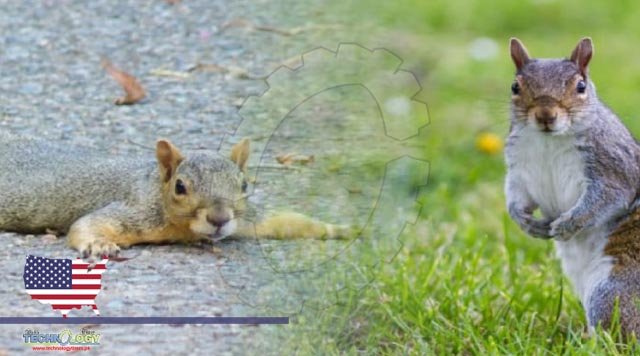What Does a Squirrel Do?, Although recent spikes in temperature affect all of us, our urban critters have had to find their own ways to beat the heat. Sometimes they “sploot.

This is Scientific American’s 60-Second Science. I’m Ashleigh Papp. It’s summertime in New York City–birds are chirping, insects are scurrying, and everything feels alive! While recent heat waves have pushed a lot of us indoors to the respite of air conditioning, the critters of this city were left to fend for themselves. Many would be surprised that they’re going to be doing the same exact things that most humans are doing… they’re not going to be pushing it, they’re gonna be taking their time and seeking those, you know, shadier spots in the park.I work with the New York City Parks Department as part of our wildlife unit, a small but mighty team that focuses on how New Yorkers can coexist with wildlife in an urban environment. Papp: From the birds and squirrel, to raccoons and even the turtles–here’s how urban wildlife is responding as the mercury rises. Let’s start with the birds. Corrao, Obviously, there are a lot of different species of birds that can be found all across the city, from your pigeons, to your larger birds of prey. And what’s interesting about birds is they don’t sweat through their skin, like humans and other mammals do.
Instead, birds lose heat through exposed skin–which, if you think about the last time you saw a bird in Prospect Park, there really isn’t much exposed aside from their feet, legs, and beak. Sometimes, when temps really spike, birds can pant–kind of a like a dog–to get rid of their excess heat. Ultimately, these tactics help but usually aren’t enough during a heat wave. They’ll find everything from a little puddle from a recent rainstorm … Or maybe the hydrants that are opened down the street, to fountains and even the spray showers in our playgrounds across the city. You can find birds that will be seeking refuge in the water to kind of help cool off.Aquatic turtles can almost always be found near the ponds and lakes of our urban sprawl. On a normal day, you might spot a small stack of turtles near the water. This is because they’re ectotherms, meaning their bodies rely on external things for heat. Piling on top of one another, or on a warm rock’s surface, helps to keep the turtle’s core body at a healthy temp. When things get too hot, like during NYC’s recent heat wave, they change their behavior a bit. Instead, they head into the water and spread out. Basically they’re hanging out at the pool all day, they’re going to be floating at the very surface of the water.
So that they can still get some of the sun, but any extra heat that might be a little dangerous to their body temperature to their core temperature, they will be able to dissipate into the water.For fur-covered critters like squirrel, cooling off in the pond or the playground water park isn’t an option. When the heat rises in the city, these little mammals can be seen doing a funny posture that’s known as “splooting”.Basically that means they’re just spreading out on a surface on their stomach, with their forelimbs forward and their hind legs backwards, just kind of splat on the groundThat increased skin to surface area helps squirrel dissipate more heat to the ground, which under a shady tree in Central Park, is way cooler than the ambient air. What Does a Squirrel Do?, Although recent spikes in temperature affect all of us, our urban critters have had to find their own ways to beat the heat. Sometimes they “sploot., Raccoons on the other hand, have developed a slightly different tactic–they head to parts of the park that have kind of, natural air conditioning. In Chicago, Magle and his team have been watching their city’s wildlife for about 10 years. All together, they have over 100 camera traps set up across different types of urban environments–from the downtown Loop and city parks to nature preserves and suburb golf courses. And during times of extreme heatWe do definitely seem to see reduced movement, it seems like when it gets very hot, animals just sort of hunker down where they are, it’s probably so energetically difficult to move around when it’s so hot.
Source: This news is originally published by scientificamerican